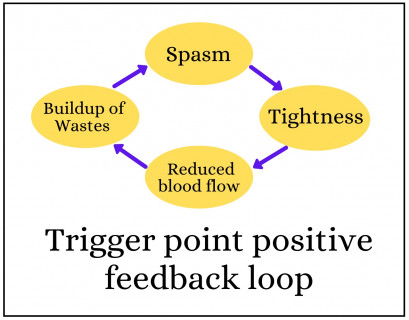
What is trigger point release
Trigger point release is a general term that describes procedures that relax tension and relieves pain in muscles that contain trigger points. It usually refers to manual techniques involving pressure and stretching muscles, but can also refer to other techniques such as the use of needles.
Trigger point release vs trigger point therapy
For practical purposes trigger point therapy and trigger point release are the same thing. They are both terms used to describe therapies that relax muscles with trigger points and relieve pain.
Trigger point releases/therapy do not rid the trigger points
The goal of trigger point release/therapy is usually to relieve and relax rather than to eliminate the underlying trigger point. This is obviously a serious omission. It appears to fix the problem, but with the trigger points still there further pain and muscle tightening are usually inevitable.
Unfortunately this fact is usually omitted when explaining therapy options. Because of this, in this article we'll:













